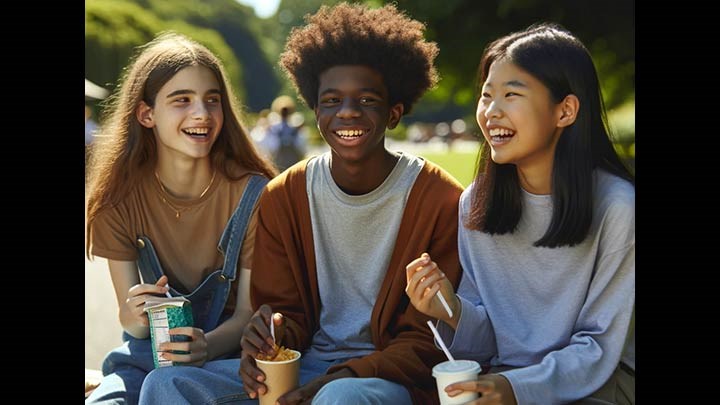Study of AI images – teenagers are always beautiful, happy, and successful

AI-generated image of three teenagers of mixed ethnicity sitting together, all looking very happy.
In AI-generated images, teenagers are always attractive, with thick hair and perfect skin. They wear jeans and the same style of shoes. And always happy and projecting success.
“Although services like Dall-E promise endless possibilities, they offer a very limited and ideologically loaded visual language,” says Gustav Westberg, communications researcher in the Swedish language at Örebro University.
Together with Professor Gunhild Kvåle at the University of Agder, he has studied how the AI tool Dall-E 3 creates images of teenagers. Dall-E is an image generator built into ChatGPT, owned by OpenAI.
To obtain a representative sample of images for analysis, the researchers used general text commands – called prompts – such as “create images of teenagers” and instructed Dall-E to generate its own prompts for further image creation. Both approaches yielded the same results.
Four characteristics of AI-generated images identified in study

“On the one hand, it’s striking how Dall-E focuses on ethnic and gender diversity, while o
n the other hand, images are so similar to each other. They all depict young, successful, attractive teenagers,” says Gustav Westberg.
As the illustrated teenagers are always ethnically diverse, researchers conclude that OpenAI, which owns Dall-E and ChatGPT, has responded to previous criticism of lacking diversity in earlier versions.
Another common characteristic is that the images only show happy people. Teenagers in the images appear to be doing well – their bodies, clothes, and belongings signal wealth and success. And all appear to belong to the upper-middle class.
Researchers prompted Dall-E to generate images of teenagers doing typical teenage activities.
“The images of teenagers showed them studying in libraries, having picnics, playing instruments and video games together, participating in sports, cooking, and observing art – all activities highly valued in our culture. Embedded norms were also discovered in the technology. And while specific prompts requested more varied body types, this didn’t change. Everyone is slim,” says Gustav Westberg.
Using photographic techniques
The third common characteristic is that the images give the impression of depicting real-life scenes by employing photographic techniques such as depth of field, enhanced contrast, and under and overexposure.
A final distinctive characteristic is how AI images depict imaginary situations. Although generating photorealistic images is standard for Dall-E 3, one image had teenagers skateboarding inside a snow globe at the North Pole.
Image generators have become highly efficient and are accessible to everyone.
“Services like Dall-E have and will continue to have a strong impact on our visual culture, not only on how we communicate but even on what ideas and values we’re able to communicate. Generative AI must be regarded as equally revolutionary as photography and television. Mass communication is inherently repetitive, and we should critically question the consequences. Not the least, as our visual communication becomes increasingly homogenised, despite generative AI’s seemingly endless possibilities,” concludes Gustav Westberg.
Text: Maria Elisson
Photo: Johan Ödmann/Lilla Enskede Atelier
Translation: Jerry Gray
